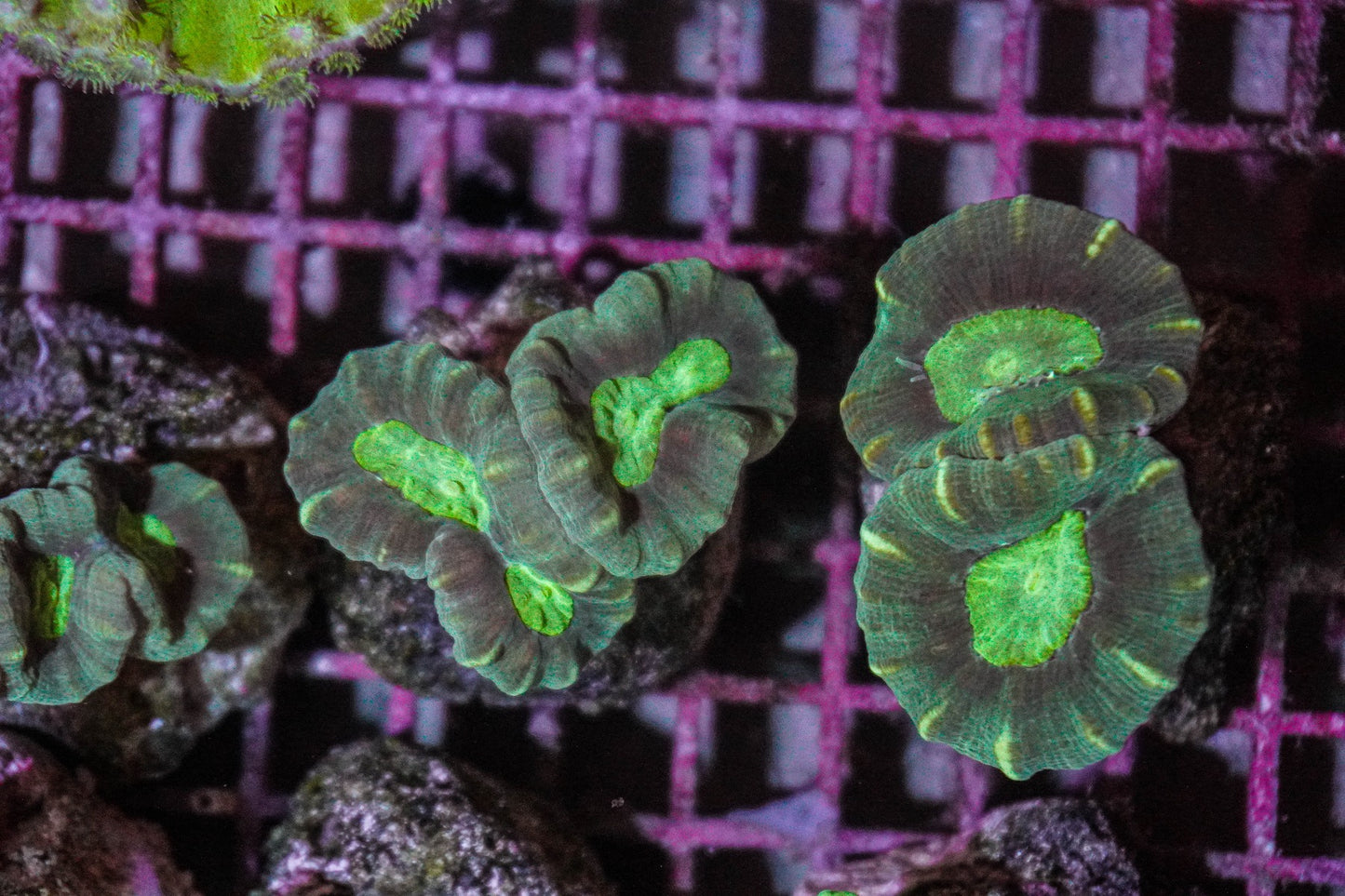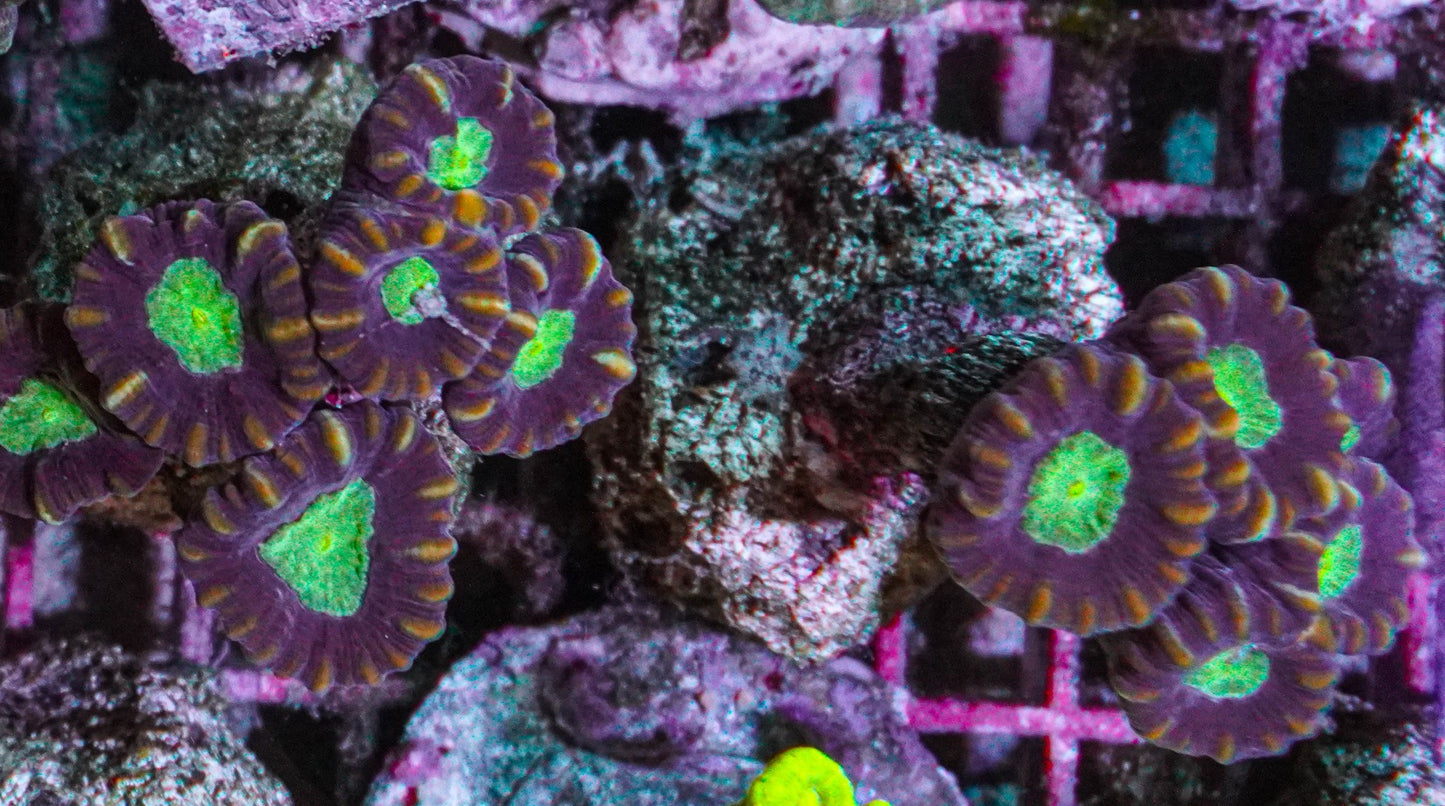Coralreef Store
Caulastrea echinulata
Caulastrea echinulata
Couldn't load pickup availability
- Indo-Pacific
- Moderate Care Level
- For Intermediate Hobbyists
- Moderate Placement in Reef Tank
Caulastrea echinulata, commonly known as Trumpet Coral or Bubble Coral, is a beautiful species of LPS (Large Polyp Stony) coral native to the Indo-Pacific region. This coral is characterized by its small, round polyps that resemble bubbles or trumpets. The colors of Caulastrea echinulata can range from vibrant shades of green, yellow, blue, to pink, often with contrasting white or light-colored tips. It is known for its unique appearance, where the polyps appear as large, fleshy heads that extend outward from the coral skeleton. Due to its aesthetic appeal and moderate care requirements, it is a popular choice among intermediate hobbyists who are experienced in maintaining stable tank conditions.
Placement in the Tank
Caulastrea echinulata thrives in moderate lighting conditions, making it suitable for placement in the middle or lower regions of the reef tank. It requires a light intensity between 100-250 PAR, though it can tolerate lower light levels. It should be kept away from intense direct light to avoid stressing the coral and causing bleaching.
In terms of water flow, this coral prefers moderate to gentle currents. Too strong of a flow can cause the polyps to retract, while stagnant water flow can limit its ability to feed properly. A slow, undulating flow mimics the natural environment and is ideal for this coral’s health.
Water Parameters
Maintaining stable water parameters is crucial for the health of Caulastrea echinulata. The recommended ranges are:
- Temperature: 24°C to 28°C (75°F to 82°F), with 26°C (79°F) being optimal.
- Salinity: 1.023–1.025 specific gravity (SG), with 1.024 being optimal.
- pH: 8.0 to 8.4, with an ideal pH of 8.2.
- Alkalinity (dKH): 8-12 dKH, with 9-10 dKH being ideal for optimal growth.
- Calcium: 400-450 ppm, crucial for skeletal growth and overall coral health.
- Magnesium: 1250-1350 ppm.
- Nitrate: Less than 5 ppm, as high levels can stress the coral and inhibit growth.
- Phosphate: Below 0.03 ppm, to prevent the growth of unwanted algae that competes for nutrients.
Feeding
Though Caulastrea echinulata relies on its symbiotic relationship with zooxanthellae for photosynthesis, it is also a filter feeder that benefits from supplemental feeding. In aquariums where plankton is limited, feeding with finely chopped mysis shrimp, brine shrimp, or zooplankton is recommended. Feeding once or twice a week is sufficient. Overfeeding should be avoided, as this can lead to water quality issues.
Maintenance and Care
Proper care and maintenance of Caulastrea echinulata include:
- Water Changes: Regular water changes (10-15% weekly) are important for maintaining water quality and removing harmful substances.
- Water Parameter Monitoring: Keep a close watch on parameters like temperature, pH, calcium, and nitrate to ensure stable conditions.
- Pruning: Caulastrea echinulata does not require frequent pruning but should be given enough space to grow without overcrowding.
- Pest Control: Monitor for pests such as Aiptasia, flatworms, and nudibranchs, which can damage the coral. Take immediate action to address any pest issues.
Compatibility
Caulastrea echinulata is a relatively peaceful coral, but it can be territorial, especially when placed too close to other species. It is best to keep it away from aggressive species with long, stinging tentacles (such as SPS corals) that may harm it. It does well with other non-aggressive LPS species, soft corals, and peaceful fish. Ensure there is enough space between corals to avoid competition for light and resources.
Conclusion
Caulastrea echinulata is a visually stunning and relatively easy-to-care-for coral that can thrive in a reef tank with moderate care. Its colorful polyps and unique appearance make it a favorite among intermediate hobbyists who can provide stable water conditions and proper maintenance. With appropriate lighting, moderate water flow, and regular care, this coral can become a striking feature in any aquarium.
Share








